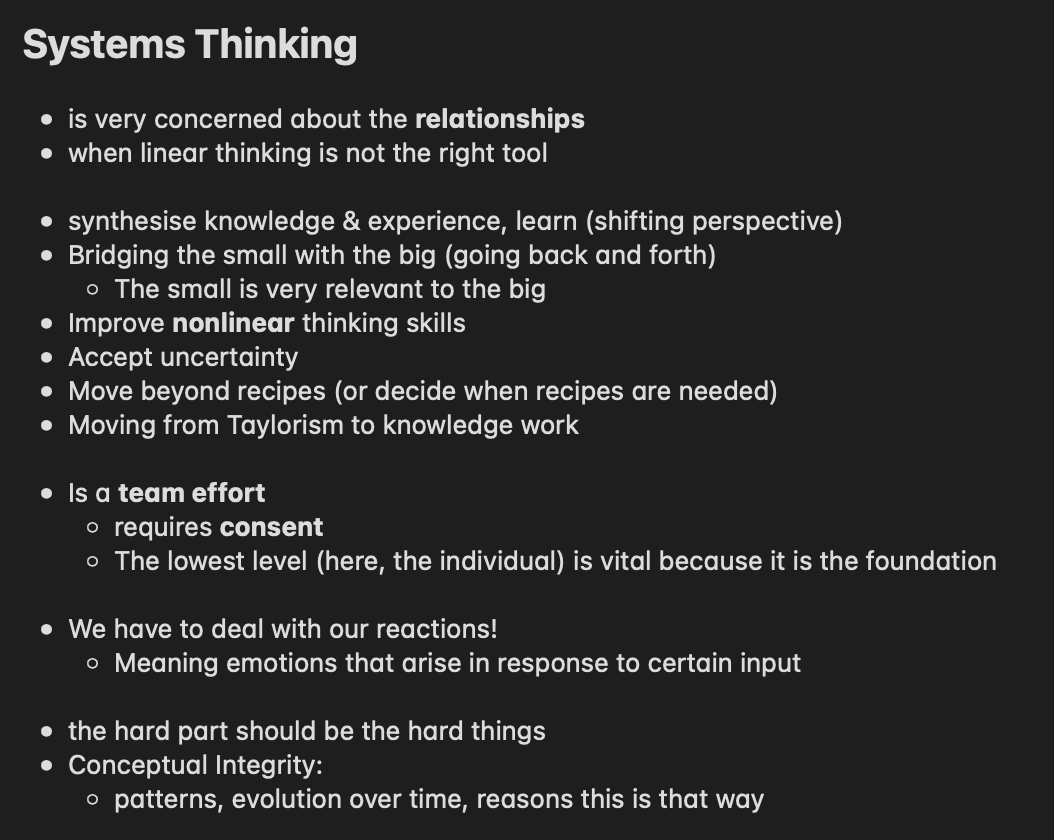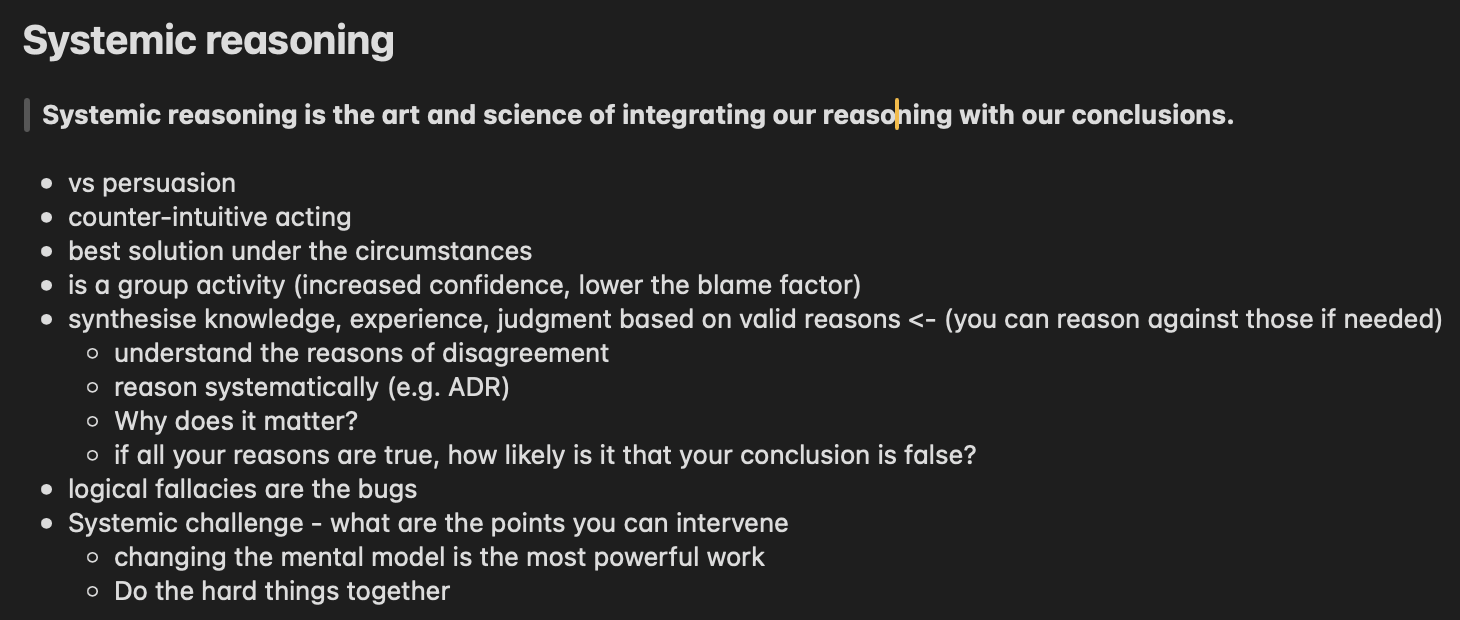Systems Thinking - impressions in the bow wave of Newcrafts
The past week I had the chance to pick the mind of Diana Montalion about Systems Thinking before the Newcrafts conference.
We considered numerous constellations that go beyond linear systems. Beyond linear means into complex, or chaotic systems.
Many interesting properties of systems arise when we consider the relationships between things. When we only consider isolated objects, we get a lot of interesting stuff to look at, but we miss all those things that emerge, that arise due to interactions between smaller elements.
So we need to look at relationships. Not only what you have in stock but what is flowing between distinct parts of whatever you’re looking at.

We can also think about how non-linear systems work and how we might be able to influence. This is a hard thing to do, considering that it’s sometimes already pretty hard to reason about linear systems. This is because even small interventions and the smallest constituents of a system can have massive influence on outcomes downstream. Hence as systems thinkers we will be looking for tipping points and also for leverage points. The emphasis here is on we.
Systems thinking is a team sport.
A variety of perspectives, the proverbial diversity, will help us figure out what makes a system tick and how we might be able to influence it. When working as a Team, sharing a space and time, but also across time to give future team members a head start, we need tools. Some of those we can find in systemic reasoning.
Finding our way through complex systems will sometimes lead us astray. In terms of strategizing and planning our future we might do mistakes. Nonetheless, we will need to take decisions lest we want to be the toy of fates. Systemic reasoning should help us to take decisions while keeping track of the reasoning that lead to those conclusions.

The iceberg model
Where can we influence a system, especially a system that involved humans? We need to be aware that the things that we see, the events occurring around us, with us, with the entity we’re working with is only the surface of it all, the part of the iceberg, if you will, that is visible above the water surface.

At the top we see things happening, events. Things change, move. We might begin to recognize the underlying patterns. When this happens, the next thing here is likely to happen next. The more underlying principles, the ambience by which such patterns emerge is the structure, the constraints given for our patterns and events to play out. Those structures are often made - they could be different. Those structures were born from our mental models that we assumed and applied.
Reaching the mental models and finding ways to shift them, change them, are the most powerful interventions you can apply to a system. But they are hardest to reach, recognize and in fact change at all.
Places to intervene
Leverage points are often counter-intuitive. Diana mentioned one example of Atomic Habits where putting on sports clothes would significantly increase the probability of going to the gym. Finding those leverage points can be met with much resistance as it may feel plain wrong to assume why such simple and naive interventions may even work. Often people are not on board with it, don’t even believe it. In other words, small does not mean easy.
And always, always, always, we will be talking about feedback loops. Some examples:
- Let the pain be painful - To get a real fix in place, people must feel the pain of something. Pain is a powerful feedback that can motivate corrective action.
- Make what must be easier, easier.
- Restructure information flows - I would add, surface information, make it easily accessible. Information leads to insights, to hypotheses, to structures that can help you do better.
- Change the rules. Some people may call this “solve the problem by making it disappear”. This I consider one of my powers in doing systems work. I am a lazy person. I will always check if a problem outlined to me is a actually a problem or whether we shouldn’t be looking at it from a different angle.
- Self-organizing. Don’t try to micro-manage everything. Seize the power of self-organization. As a leader, you don’t necessarily have to define yourself by what you control, but by how much you are the catalyst for establishing those flows of information and empowerment that ultimately awakens every part of your endeavor.
- Change the goals, the why. This ties into your mental models. What drives us every day? Changing that will undoubtedly have massive impact on your day-to-day work.
- Change the paradigm - see above!
- Maintain the power to transcend paradigms. This certainly is the ultimate force that can change your course fundamentally. You can be the driving force of your fate (provided you are not in a dire situation where your empowerment is being actively suppressed.)
All of this was interspersed with some intermezzos, most notably by Indu Alagarsamy who showed me her service blueprints that were immensely packed with information and Romeu Moura who gave me a cool lecture on some interesting philosophical aspects in the context of Tech over lunch.
All in all I felt very privileged to have a look into the systems thinking community and here’s hope that I’ll be able to brush with it again in the future.